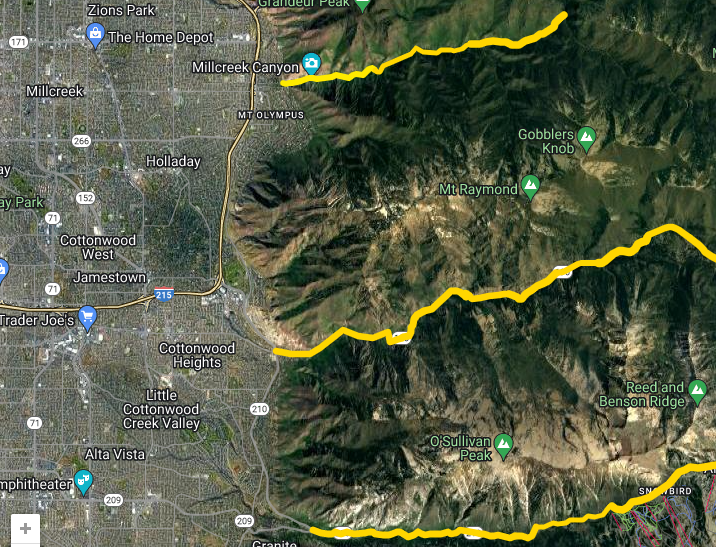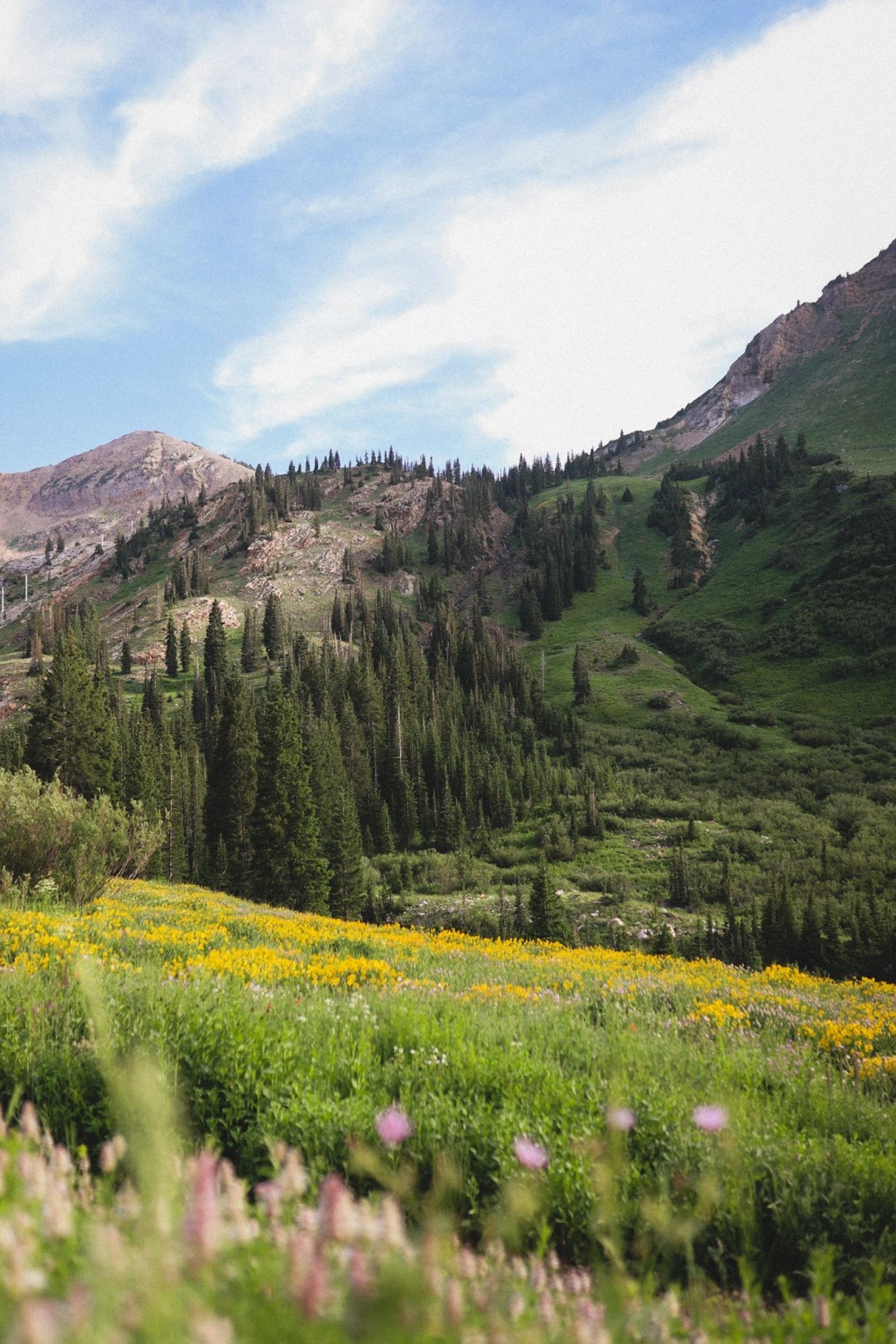What are the Tri-Canyons and what is The Tri-Canyons Master Plan?
Over the last ten years, the Wasatch Mountains have been experiencing a continued increase in recreation and visitation. Visitation in this area, driven primarily by population growth in the region, is staggering. Visits to the Uinta-Wasatch-Cache National Forest Tri-Canyons area exceeds that of many of the National Parks in the state. It is imperative to formalize a long-term management plan for these mountains.
The most frequented canyons across the Wasatch are the “Tri-Canyons”. The Tri-Canyon area includes Millcreek Canyon, Big Cottonwood Canyon, and Little Cottonwood Canyon (see image below). These canyons are made up of both public and private lands. The US Forest Service Salt Lake Ranger District (SLRD) is responsible for the National Forest and Wilderness Area boundaries across the Tri-Canyons and are eager to put forth a Tri-Canyons Master Plan that will focus on bettering the existing trail systems, protecting the watershed, and strengthening habitat conservation efforts.

What will the Tri-Canyons Master Plan accomplish?
This master plan will act as a framework that promotes a collective vision to ensure the future of the Wasatch has conservation at its core. We have seen firsthand both the resource impacts and the demand this beloved region has incurred, all compounded by population growth and climate change, underscoring the need for an integrated conservation and recreation plan. It is up to all of us to formalize a plan that defends resource goals, focuses on rehabilitation and rewilding, well-planned trail systems, and provides the space for the Wasatch to breathe.
The importance of this geography to our members and community is complex. First and foremost, these areas are a watershed for Salt Lake County. As more people continue to exist across the Tri-Canyons, the bigger the impact on the environment and the waterways. The master plan should be sure to focus on water and habitat conservation efforts.
Secondly, this area is home to some of the most breathtaking backcountry access in the Intermountain Region. With visitation increasing, the SLRD is continuing to collect data on user created trails that inevitably impact land, water, other users, and flora and fauna in the designated Wilderness Areas of the Central Wasatch Mountains. The goal of this trail inventory project is to better understand which trailheads and trail systems see the most use and need the most maintenance.
Who is involved in the Tri-Canyons Master Plan?
-
-
- YOU!
- Salt Lake Ranger District
- Save Our Canyons and many other local nonprofits and coalition groups
- National Park Service
- Landmark Design
- Central Wasatch Commission
- Local government and county councils
-
With a master plan in the works that will naturally involve many different user groups and stakeholders, the SLRD has applied to work with the National Parks Service. Balancing conservation priorities with recreational demand has been a challenge that the National Park Service has risen to. Although the Wasatch is not a National Park, it is true that we experience the same volume and usage as the surrounding National Parks across the state - in turn, the Wasatch needs the same level of attention, funding, maintenance, and proactive management. We believe the expertise and experience the National Parks Service can lend to this project can aid in balancing competing priorities for the benefit of the many values intrinsic to the land, the water we are reliant upon, and the opportunities we seek to share with other people.
This is a scaled effort that Save Our Canyons has consistently worked with the Forest Service on for many years and we need our members to be actively involved so that we create an effective management plan. With 1,800 native plant and animal species in the Wasatch and millions of annual visitors, we take our responsibility of caring for these areas seriously and fully support the development of a Tri-Canyon Master Plan in hopes that it will help us improve our watershed, ecosystem health, and the future of recreation opportunities and promote a legacy of stewardship we can all be proud and part of.
Take a moment to read through the Mountain Accord that was established in 2015 to better understand the conservation history of the Wasatch and who has been at the forefront of protecting this environment.

Next Steps and How You Can Get Involved
The Salt Lake Ranger District will be hosting three public listening sessions (details below) for the community to join together to learn more about the project, voice their ideas about the trails and the canyons, suggestions for their management plan, and ask the Forest Service questions about the Tri-Canyons Master Plan. We encourage you to attend any or all of these listening sessions! The Salt Lake Ranger District needs to hear from the community that cares, enjoys, and wants to protect the Wasatch Mountains.
After the listening sessions, the Salt Lake Ranger District will take the information they gathered from the community and begin to write the first draft of the Tri-Canyons Master Plan which will be released Summer 2023. Attend the virtual meetings here on Webex!

Additional Resources:
1. You can learn more about the SLRD Tri-Canyons Master Plan timeline here: https://www.tricanyontrails.org
2. Central Wasatch Trail Use Report - February 2023.
3. Read our blog post: An Increase In Visitation Pressure Across The Central Wasatch Is Undeniable.
4. Be sure to follow us on Instagram and Facebook to stay informed


